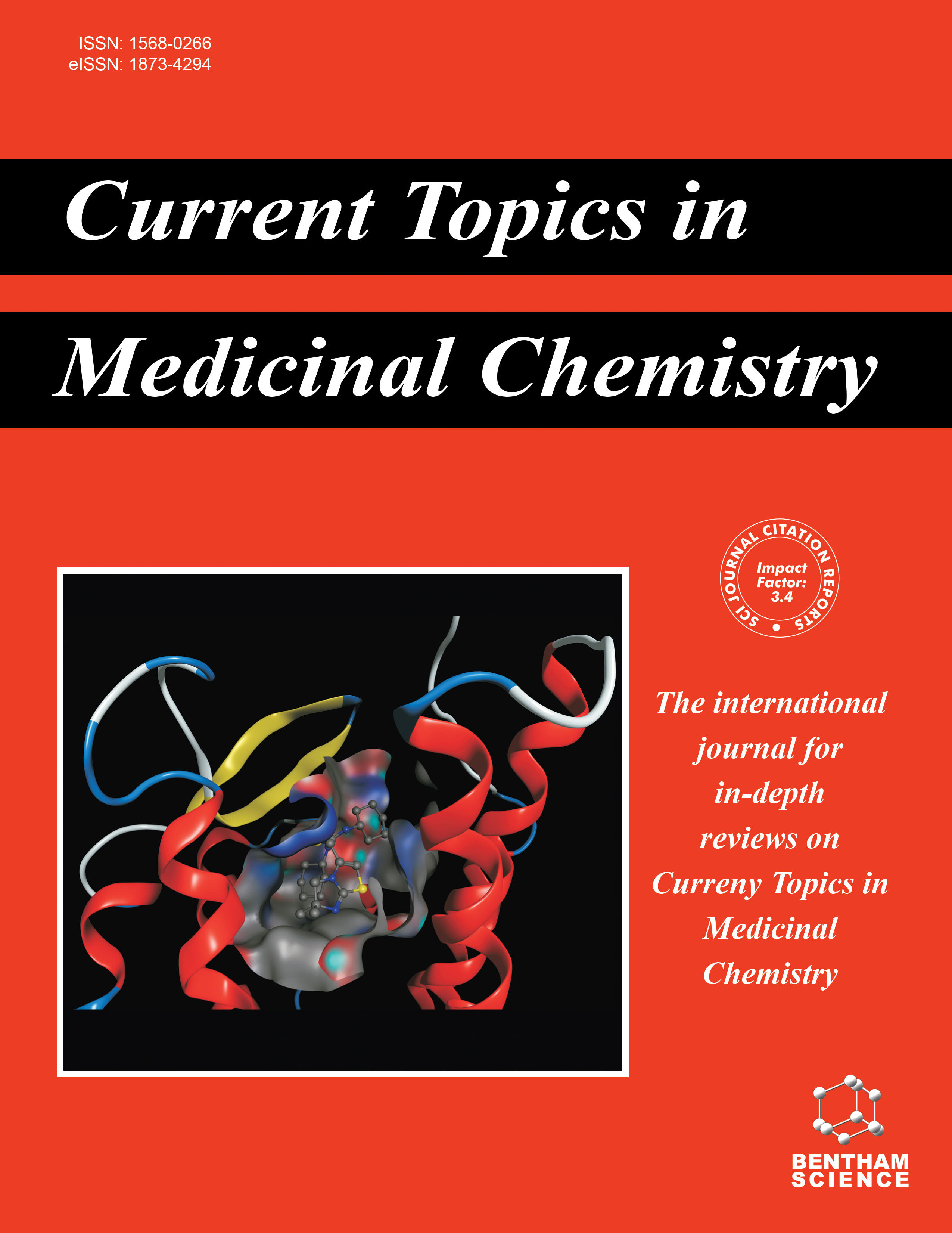- Home
- A-Z Publications
- Current Topics in Medicinal Chemistry
- Previous Issues
- Volume 8, Issue 17, 2008
Current Topics in Medicinal Chemistry - Volume 8, Issue 17, 2008
Volume 8, Issue 17, 2008
-
-
Editorial [Hot Topic: Current Approaches to the Treatment of Diabetes (Guest Editor: Stephen L. Gwaltney II)]
More LessThe International Diabetes Federation estimates that in 1985, 30 million people had diabetes. By 2000, this number had increased to 150 million. In 2025, 380 million people will be afflicted by this disease. Type 2 diabetes accounts for more than 85% of these cases. The reasons for this alarming growth are an aging population, unhealthy diets, lack of exercise and increasing obesity [1]. Diabetes is the fourth leading cause of deat Read More
-
-
-
Peroxisome Proliferator-Activated Receptor γ Agonists as Insulin Sensitizers: From the Discovery to Recent Progress
More LessAn epidemic of metabolic diseases including type 2 diabetes and obesity is undermining the health of people living in industrialized societies. There is an urgent need to develop innovative therapeutics. The peroxisome proliferatoractivated receptor γ (PPARγ) is one of the ligand-activated transcription factors in the nuclear hormone receptor superfamily and a pivotal regulator of glucose and lipid homeostasis. The discover Read More
-
-
-
Inhibitors of 11β-HSD1: A Potential Treatment for the Metabolic Syndrome
More LessAuthors: David J. St. Jean Jr., Minghan Wang and Christopher Fotsch11β-hydroxysteroid dehydrogenase type 1 (11β-HSD1) is the enzyme that converts cortisone to cortisol. A growing body of evidence suggests that selective inhibition of 11β-HSD1 could potentially treat the metabolic syndrome. This review provides an overview of compounds reported to have in vivo inhibitory activity against this enzyme. A major focus of this review is Amgen's 11β-HSD1 program which includes a variety of in v Read More
-
-
-
Glucokinase Activators for the Potential Treatment of Type 2 Diabetes
More LessAuthors: J. Grimsby, S. J. Berthel and R. SarabuThe search for innovative and clinically-differentiated medicines for the treatment of type 2 diabetes is an active area of research for pharmaceutical companies. The discovery of allosteric Glucokinase (GK) activators in 2003 represents the first time a pharmaceutical agent was used to directly augment the actions of an enzyme by increasing its maximal velocity and substrate affinity. This discovery, coupled with Read More
-
-
-
Sirtuin Modulators: Targets for Metabolic Diseases and Beyond
More LessAuthors: B. G. Szczepankiewicz and P. Y. NgOver the past ten years, sirtuins have emerged as an important class of drug targets. These enzymes play an important role in gene activation and silencing in all organisms from prokaryotes to humans. There is evidence that sirtuin modulation can be beneficial for a wide variety of diseases associated with aging. Among these conditions are diabetes, neurodegenerative diseases, and cancer. Agents that activate some sirtuin Read More
-
-
-
Medicinal Chemistry Approaches to the Inhibition of Dipeptidyl Peptidase IV
More LessInhibitors of dipeptidyl peptidase IV (DPP-4) have emerged as an important new class of therapeutic agents for type two diabetes. Various medicinal chemistry approaches have been applied to this area and have resulted in the identification of numerous late-stage development compounds. The discoveries of several of the most advanced DPP-4 inhibitors are reviewed.
-
Volumes & issues
-
Volume 25 (2025)
-
Volume 24 (2024)
-
Volume 23 (2023)
-
Volume 22 (2022)
-
Volume 21 (2021)
-
Volume 20 (2020)
-
Volume 19 (2019)
-
Volume 18 (2018)
-
Volume 17 (2017)
-
Volume 16 (2016)
-
Volume 15 (2015)
-
Volume 14 (2014)
-
Volume 13 (2013)
-
Volume 12 (2012)
-
Volume 11 (2011)
-
Volume 10 (2010)
-
Volume 9 (2009)
-
Volume 8 (2008)
-
Volume 7 (2007)
-
Volume 6 (2006)
-
Volume 5 (2005)
-
Volume 4 (2004)
-
Volume 3 (2003)
-
Volume 2 (2002)
-
Volume 1 (2001)
Most Read This Month
Article
content/journals/ctmc
Journal
10
5
false
en


